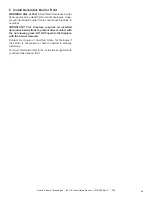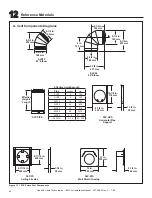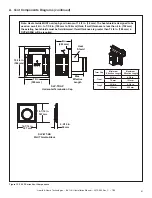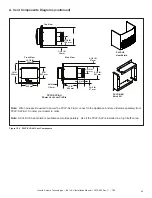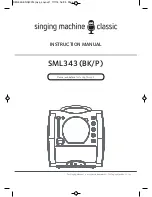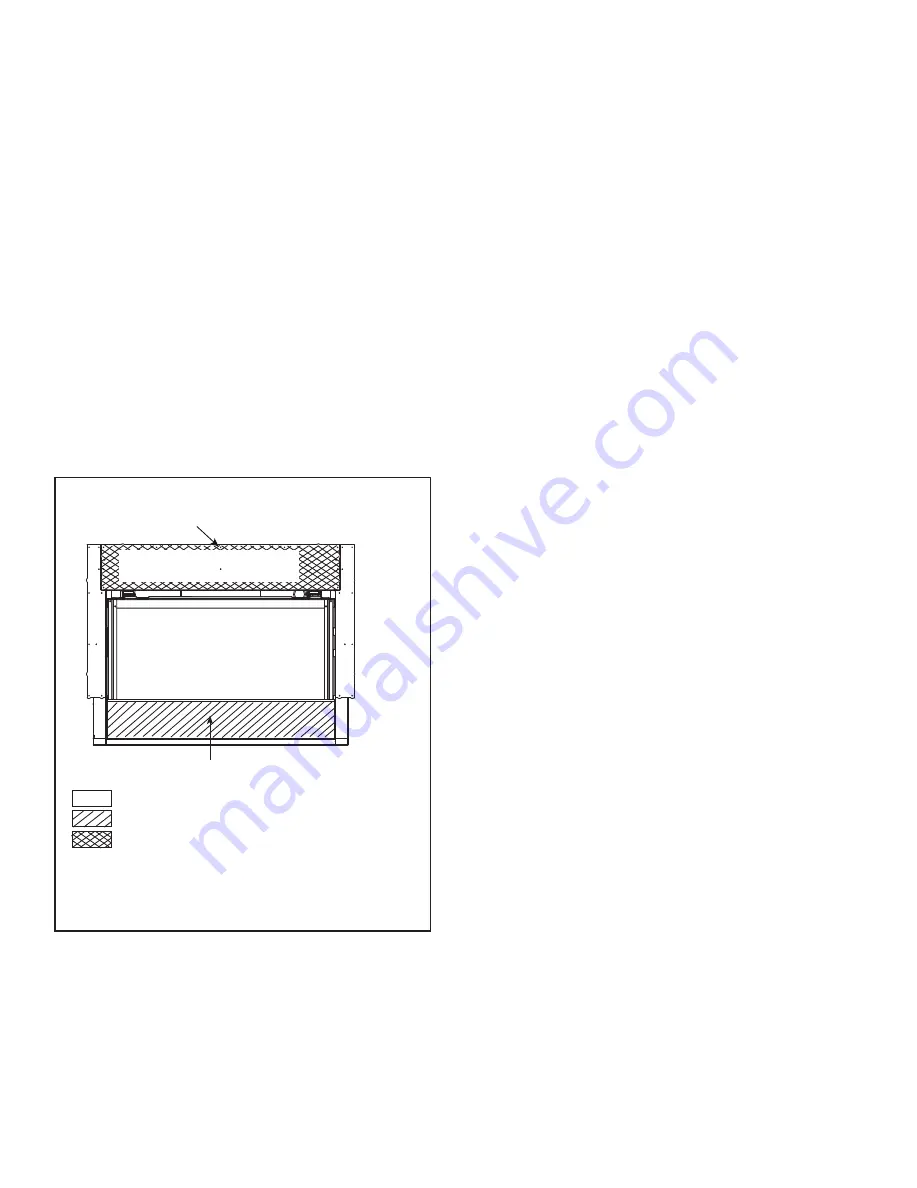
48
Hearth & Home Technologies • B41L-AU Installation Manual • 2570-980 Rev. C • 7/20
WARNING! Risk of Fire!
Maintain specified air space
clearances to combustibles.
Failure to comply with
these instructions may cause a fire or cause the appli
-
ance to overheat.
Note: It is acceptable to use a silicone sealant with a
minimum of 300 ºF (149 ºC) continuous exposure rating
to adhere drywall to lower cover panel.
Figure 10.2 Finishing Details
= NO SCREWS ALLOWED
= 1 IN. (25 mm) MAX. SELF-TAPPING SCREWS ALLOWED
= 5 IN. (127 mm) - 7 IN. (178 mm) SELF-TAPPING SCREWS ALLOWED
FACTORY-INSTALLED
NON-COMBUSTIBLE BOARD
LOWER COVER PANEL
PILOT HOLES (11 LOCATIONS) TO ATTACH
NON-COMBUSTIBLE BOARD TO FRAMING
WARNING! Risk of Fire!
Maintain specified air space
clearances to combustibles. Inadequate air space could
cause overheating and fire.
CAUTION!
Risk of Glass Damage and Cuts!
DO NOT
drill or install any type of screw or fastener into the lower
cover panel. Sharp screw or fastener tips may penetrate
and break the glass or cause cuts.
The final fireplace installation can be accomplished by
either the Overlap Fit or Inside Fit method. Reference
Section 10.D regarding installation details associated
with the Inside Fit and Overlap Fit methods.
It is acceptable to pre-drill holes and use self-tapped
screws in the factory-installed non-combustible board to
attach non-combustible backer board for tile, marble, etc.
Refer to Figure 10.2 for acceptable screw location and
screw length requirements.
Do not drill or install screws which may penetrate the
lower cover panel as this will restrict required access
to the glass, battery-back-up, and control module. See
Figure 10.2.
Note:
If the desired look is painted drywall, it is
recommended that no additional screws are installed into
the factory-provided non-combustible board. Only install
the screws provided into the pilot holes located in the
factory-provided non-combustible board.
Drywall Joint-Crack Prevention and Repair
Drywall joints around the fireplace will be affected by ex
-
posure to elevated temperatures, along with other envi
-
ronmental, structural factors due to new construction, and
methods used to install and finish the drywall. If a crack
does emerge adjacent to the fireplace, it can be perma
-
nently repaired by filling it with a paintable latex caulk,
followed by repainting.
Some movement of the screws used to secure the non-
combustible board to the appliance/surround framing is
expected. If a blemish begins to show over a screw head,
sand the surface to remove the blemish and repaint.
NOTICE:
The location of the Passive Heat discharge
opening could allow for venting and other construction
materials to be visible. It is acceptable to paint the
vent pipe and other construction materials using a high
temperature paint with a minimum of 300 °F (149 °C)
continuous exposure rating. Hearth & Home Technologies
recommends using black touch up paint (part number TUP-
GBK-12) available from your Hearth & Home Technologies
dealer.


























